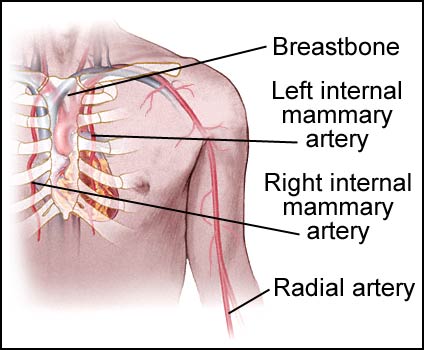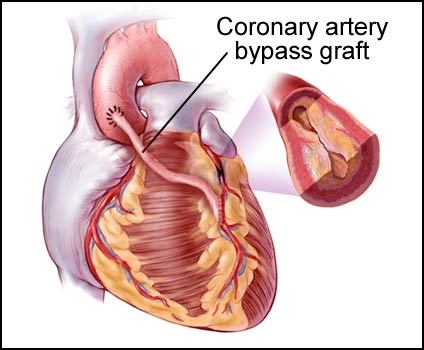
Arterial Grafts
Sections of arteries in the body can be used as grafts to reroute blood around arterial blockage that cut off blood flow (see fig. 1). The internal mammary arteries run along both sides of the back of the breastbone and supplies blood to the chest wall. The radial artery runs along the lower arm on the same side as the thumb and supplies the lower arm with blood. If the internal mammary artery is used, the beginning of the artery is usually left attached to the artery under the collar bone and the end of the artery is attached to the heart’s blood vessel supplying blood to the heart. If the radial artery is used, it is removed from the arm completely with one end attached to a good blood supply, usually the aorta, and the other end attached beyond the blockage. As a general rule, arteries used for bypass remain open longer than veins used for bypass (see fig. 2). Sections of arteries in the body can be used as grafts to reroute blood around arterial blockage that cut off blood flow (see fig. 1). The internal mammary arteries run along both sides of the back of the breastbone and supplies blood to the chest wall. The radial artery runs along the lower arm on the same side as the thumb and supplies the lower arm with blood. Both the internal mammary arteries and the radial artery are options to be used as bypass grafts (see fig. 2).
Figure 1: Arteries commonly used for bypass grafts.
Figure 2: Coronary artery bypass graft rerouting blood around a coronary artery blockage.
Visit Ohio Heart and Vascular Center for more information.

